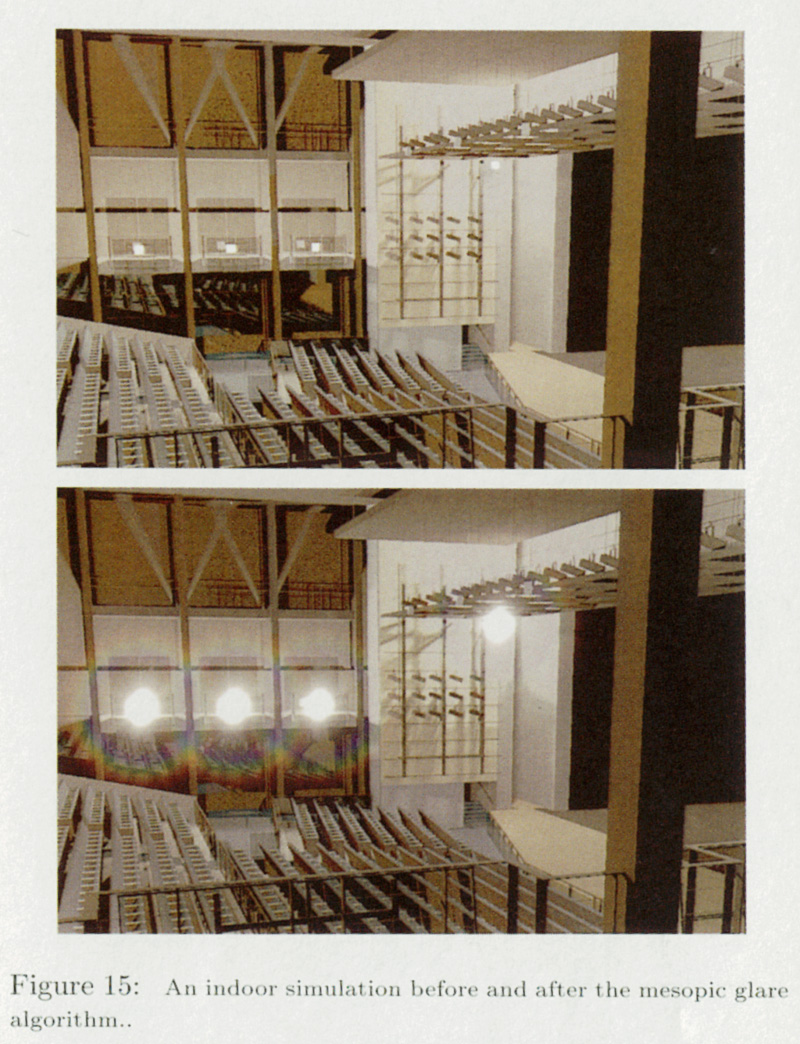|
|
[SSZG95]
Cornell University Program of Computer Graphics |
|
||||
Physically-based glare effects for digital images.Greg Spencer, Peter Shirley, Kurt Zimmerman, and Donald P. Greenberg.In Robert Cook, editor, SIGGRAPH 95 Conference Proceedings, Annual Conference Series, pages 325--334. ACM SIGGRAPH, Addison Wesley, August 1995. The physical mechanisms and physiological causes of glare in human vision are reviewed. These mechanisms are scattering in the cornea, lens, and retina, and diffraction in the coherent cell structures on the outer radial areas of the lens. This scattering and diffraction are responsible for the bloom and flare lines seen around very bright objects. The diffraction effects cause the lenticular halo. The quantitative models of these glare effects are reviewed, and an algorithm for using these models to add glare effects to digital images is presented. The resulting digital point-spread function is thus psychophysically based and can substantially increase the perceived dynamic range of computer simulations containing light sources. Finally, a perceptual test is presented that indicates these added glare effects increase the apparent brightness of light sources in digital images.
This paper is available as a PDF file SSZG95.pdf (2.7M).
| ||||||
| ||||||
